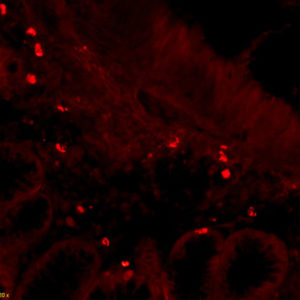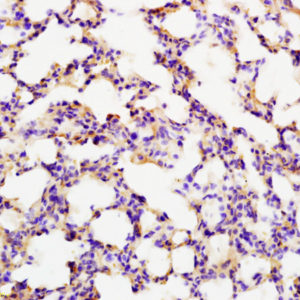-

- Home
- Shop
- Article
- About Us
- Contact Us
- Molecular Biology
- How to choose the right antibody
- Aflatoxin
- Vitamin K2
- Melatonin
- Introduction of ELISA Kits
- Food Safety Detection
- Food Safety
- Animal Disease
- Diagnosis
- Human ELISA
- Mouse ELISA
- Sheep ELISA
- Other ELISA
- Primary Antibody
- Second Antibodies
- Labeled Primary Antibody
- Labeled Secondary Antibody
- Small Molecular Antibody and Antigen
- Animal Disease Antibody and Antigen
- ELISA Test
- Rapid Test
- Diagnosis Antigen and Antibody
- Diagnosis Kit
0.1%

Original price was: $878.65.$878.02Current price is: $878.02.
Reagent Quantity Microelisa Stripplate 12well×8strips Standard: 90?mol/L 1×0.5ml Standard Diluent 1×1.5ml HRP-Conjugate Reagent 1×6ml Sample Diluent 1×6ml Chromogen Solution A 1×6ml Chromogen Solution B 1×6ml Stop Solution 1×6ml Wash Solution 1×20ml×30 fold User manual 1 Adhesive Strip 105
Description
The kit takes out from the refrigeration should be balanced 15-30 minutes in the room temperature, if the coated ELISA plates have not been used up after opening, the plate should be stored in sealed bag.
Washing buffer will Crystallization separation, it can be heated the water helps dissolve when dilution. Washing does not affect the result.
Pipette sample with pipettors each step, and proofread its accuracy frequently, avoids the experimental error. Pipette sample within 5 min, if the number of sample is much, recommend using multichannel pipettor.
If the testing material content is excessively high (The sample OD is higher than the first standard well)?please dilute sample (n-fold).
Adhesive Strip only limits the disposable use to avoid cross-contamination.
The substrate should be preserved evade the light.
Please refer to use instruction strictly. The test result determination must take the microtiter plate reader as a standard.
All samples, washing buffer and each kind of reject should refer to infective material process.
Do not mix reagents with those from other lots.
Reactivity : Human
Method type : Sandwich ELISA
Minimum Detection Limit :
Detection Range :
Application : ELISA
Purpose : For the quantitative determination of target substances concentrations.
Research Area : Tags & Cell Markers->Cell Type Markers->Tumor Associated, Signal Transduction->Cytoskeleton / ECM->Cell Adhesion->Cell Adhesion Molecules->Vascular, Signal Transduction->Cytoskeleton / ECM->Cell Adhesion->Cell Adhesion Molecules->Endothelial, Neuroscience->Neurology process->Neural Signal Transduction, Stem Cells->Mesenchymal Stem Cells->Surface Molecules, Cancer->Invasion/microenvironment->ECM->Cell adhesion->Other, Cardiovascular->Atherosclerosis->Vascular Inflammation->Leukocyte recruitment->Cell adhesion molecules, Kits/ Lysates/ Other->Kits->ELISA Kits->ELISA Kits->Adhesion molecules ELISA kits, Kits/ Lysates/ Other->Kits->ELISA Kits->ELISA Kits->Atherosclerotic proteins ELISA kits, Cardiovascular->Angiogenesis->Endothelial Cell Markers
Sample Type : serum, plasma, Urine, tissue samples, cell culture supernates
Plate : Pre-coated,Strips (12 x 8)
Restrictions : For Research Use only
Storage : 2 °C - 8 °C
Storage Comment : Store at 4°C for 6 months, at -20°C for 12 months. Avoid multiple freeze-thaw cycles
Expiry Date : 12 months
Size : 96T
Immunogen : Synthetic peptide (the amino acid sequence is considered to be commercially sensitive) (internal sequence).
Availability : 3-5 working days
Target Details :Uridine diphosphatase (UDPase) that promotes protein N-glycosylation and ATP level regulation. UDP hydrolysis promotes protein N-glycosylation and folding in the endoplasmic reticulum, as well as elevated ATP consumption in the cytosol via an ATP hydrolysis cycle. Together with CMPK1 and AK1, constitutes an ATP hydrolysis cycle that converts ATP to AMP and results in a compensatory increase in aerobic glycolysis. Also hydrolyzes GDP and IDP but not any other nucleoside di-, mono- or triphosphates, nor thiamine pyrophosphate. Plays a key role in the AKT1-PTEN signaling pathway by promoting glycolysis in proliferating cells in response to phosphoinositide 3-kinase (PI3K) signaling.
Precision : Intra-assay Precision (Precision within an assay) CV%<15% Three samples of known concentration were tested twenty times on one plate to assess. Inter-assay Precision (Precision between assays) CV%<15% Three samples of known concentration were tested in twenty assays to assess.
Linearity : To assess the linearity of the assay, samples were spiked with hig3h concentrations of rat ADP in various matrices and diluted with the Sample Diluent to produce samples with values within the dynamic range of the assay.
Recovery :
Typical Data : These standard curves are provided for demonstration only. A standard curve should be generated for each set of samples assayed. ng/ml OD1 OD2 Average 1000 0.088 0.090 0.089 500 0.135 0.142 0.139 250 0.227 0.237 0.232 125 0.324 0.341 0.333 62.5 0.583 0.598 0.591 31.25 0.847 0.864 0.856 15.62 1.228 1.235 1.232 0 2.155 2.199 2.177


